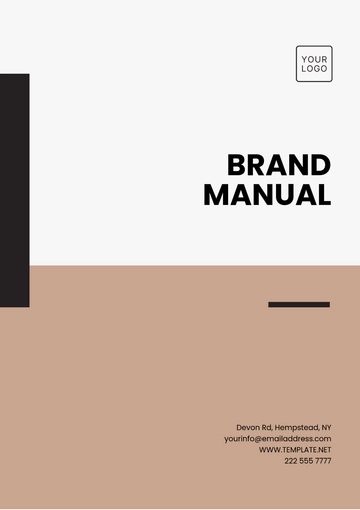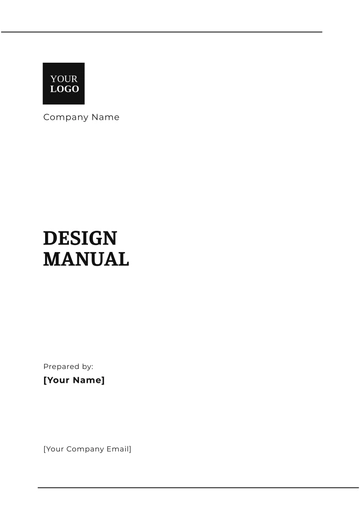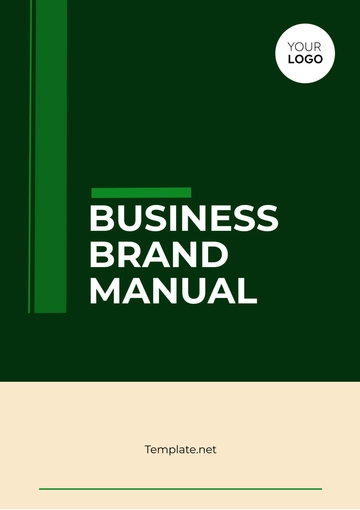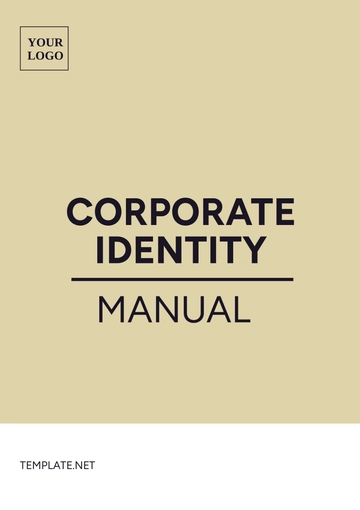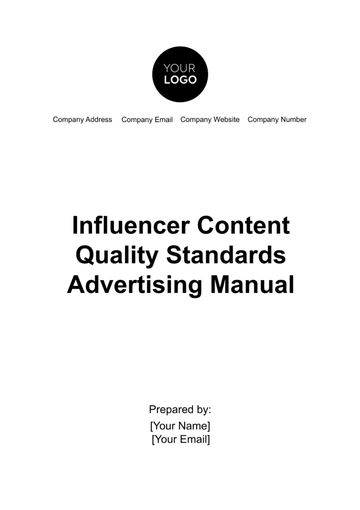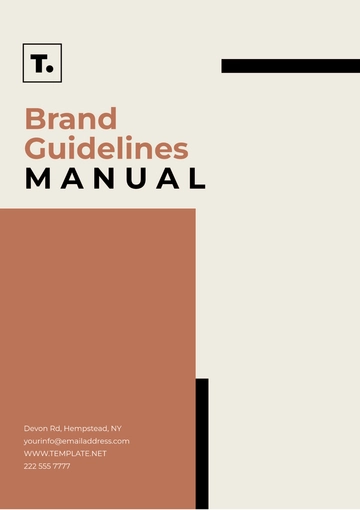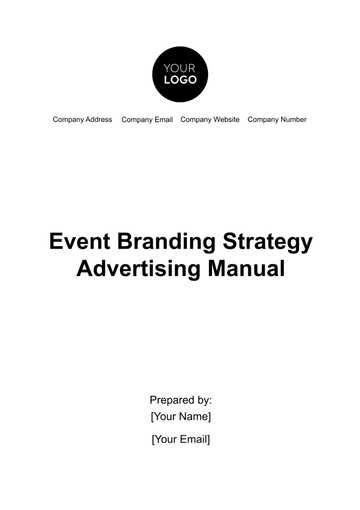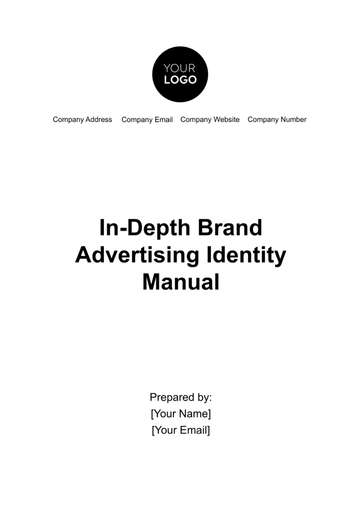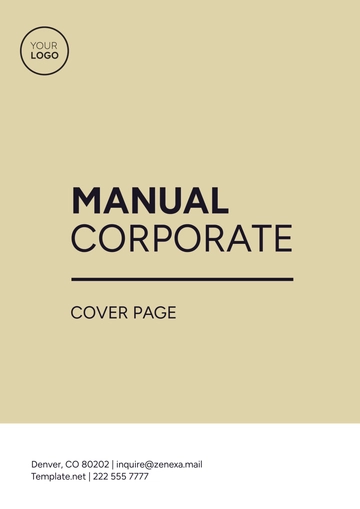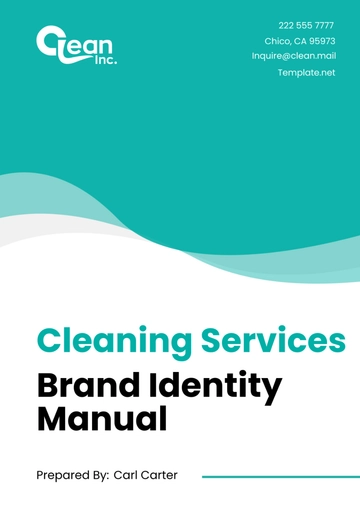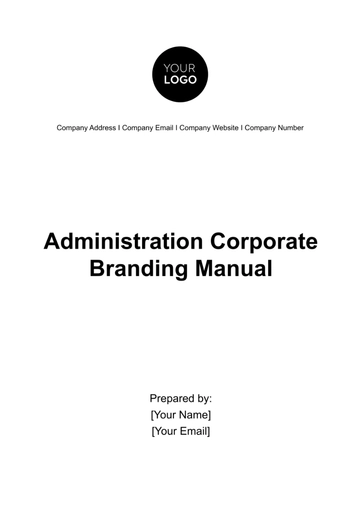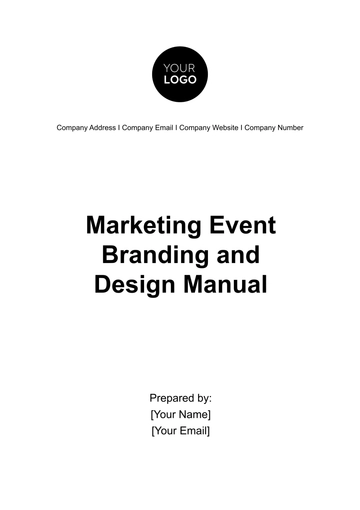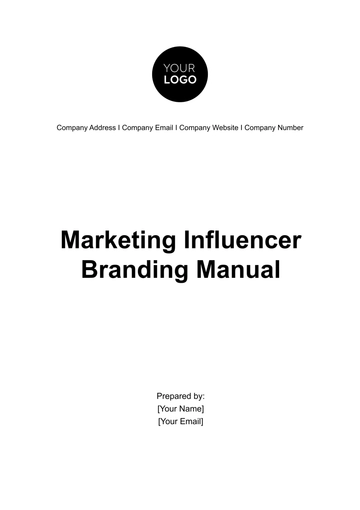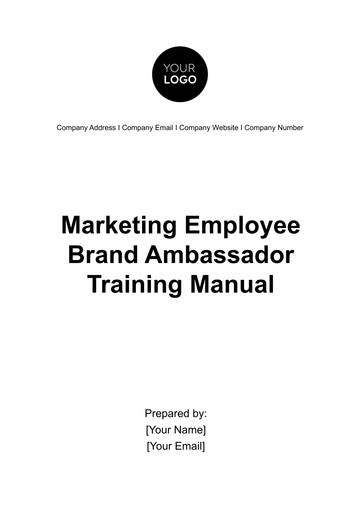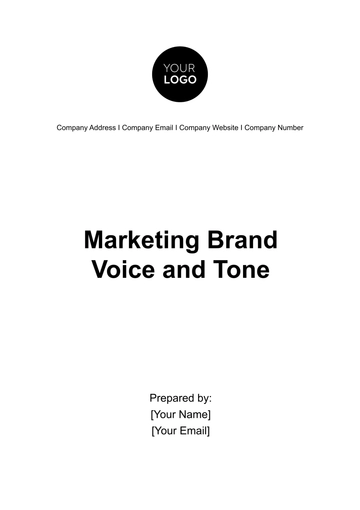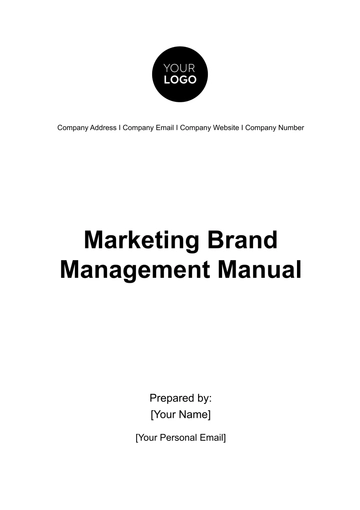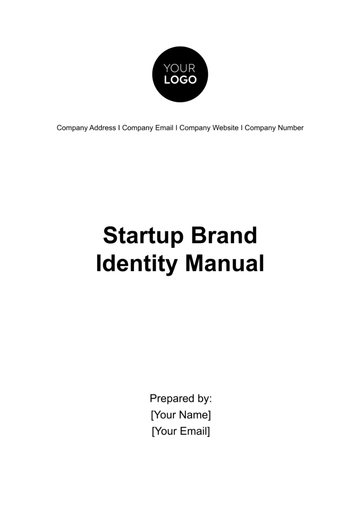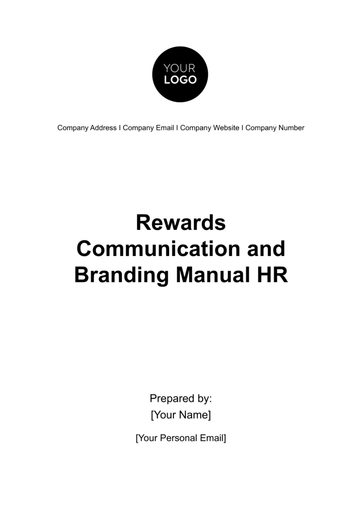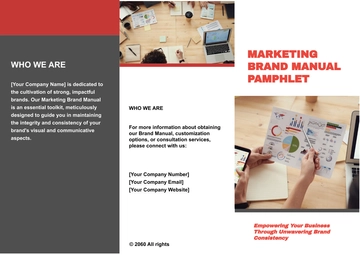Free Startup Brand Identity Manual
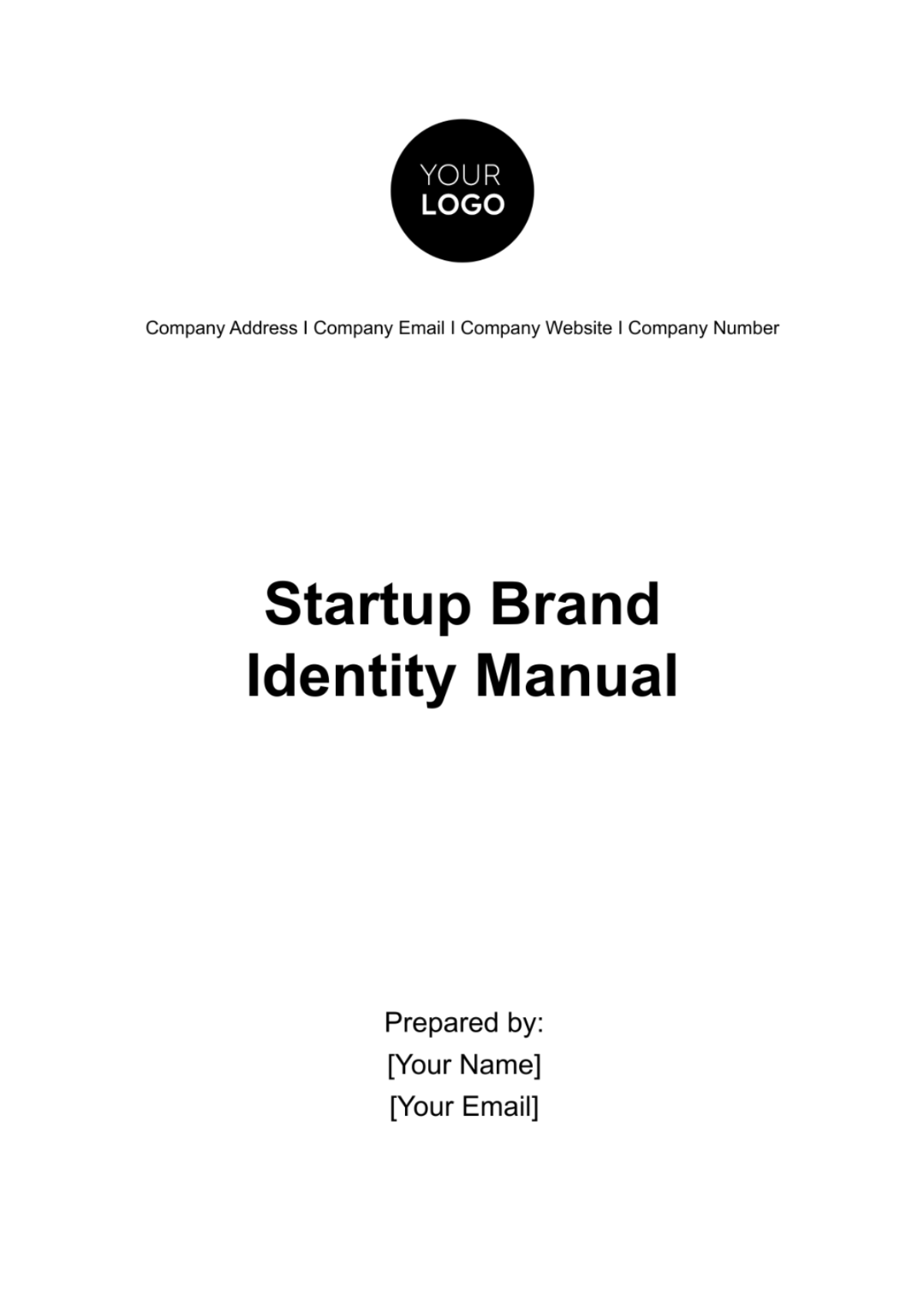
Introduction
A. Purpose
The purpose of this Brand Identity Manual is to provide comprehensive guidelines for the consistent and effective application of [Your Company Name]'s brand identity across all communication channels and touchpoints. By adhering to these guidelines, all stakeholders, including employees, partners, and external vendors, can ensure alignment with our brand values and objectives.
B. Scope
This manual covers the usage of essential brand elements such as the logo, color palette, typography, imagery, voice, and tone. It also provides guidelines for the application of the brand across various mediums, including print, digital, and marketing collateral.
C. Audience
This manual is intended for use by all employees, contractors, agencies, and partners involved in representing or communicating on behalf of [Your Company Name]. It is essential that everyone involved in brand-related activities familiarize themselves with these guidelines to maintain consistency and integrity in our brand identity.
Brand Overview
A. Vision
At [Your Company Name], our vision is to revolutionize the way people connect with technology. We envision a future where seamless integration between humans and technology enhances productivity, creativity, and overall well-being. Through our innovative solutions, we aim to simplify complex processes, empower individuals, and inspire positive change in society.
B. Mission
Our mission at [Your Company Name] is to democratize access to cutting-edge technology and digital experiences, making them accessible and inclusive for all. We are committed to developing user-centric solutions that bridge the gap between technology and humanity, fostering meaningful connections and driving positive outcomes for individuals and businesses alike.
C. Values
Innovation: We embrace creativity and innovation to develop groundbreaking solutions that address the evolving needs of our customers and industry.
Integrity: We conduct ourselves with honesty, transparency, and ethical behavior in all our interactions, fostering trust and respect among our stakeholders.
Collaboration: We believe in the power of collaboration and teamwork, leveraging diverse perspectives to achieve shared goals and drive collective success.
Customer-Centricity: We prioritize our customers' needs and aspirations, delivering exceptional experiences and solutions that exceed their expectations.
Continuous Improvement: We are committed to continuous learning and improvement, constantly seeking new opportunities to enhance our processes, products, and services.
D. Brand Personality
Our brand personality is characterized by innovation, reliability, and approachability. We are forward-thinking and dynamic, yet grounded in our commitment to delivering dependable solutions that simplify complexities and enrich lives. With a friendly and inclusive demeanor, we strive to connect with our audience on a human level, fostering trust and loyalty.
E. Brand Promise
At [Your Company Name], we promise to empower individuals and businesses to thrive in a digital world. Through our innovative technologies and user-centric approach, we are dedicated to delivering seamless experiences that inspire creativity, drive productivity, and unlock new possibilities. Our commitment to excellence ensures that every interaction with our brand leaves a lasting impression, reinforcing our position as a trusted partner in digital transformation.
Brand Elements
A. Logo
The [Your Company Name] logo is the primary visual representation of our brand identity and should be used consistently across all communications and touchpoints. The logo consists of a stylized lettermark "YC" enclosed in a circular emblem.
Logo Usage Guidelines
The logo should always be displayed in its full-color version on light backgrounds and in its monochrome version on dark backgrounds to ensure optimal visibility and legibility.
The minimum clear space around the logo should be equal to the height of the letter "Y" in the emblem.
Proportions and alignment should always be maintained, and the logo should never be stretched, distorted, or altered in any way.
For digital applications, the logo should be provided in vector formats (e.g., AI, EPS) for scalability and raster formats (e.g., PNG, JPEG) for web use.
Logo Variations
Primary Logo: Full-color version with the lettermark "YC" in white and the circular emblem in #3366CC.
Monochrome Logo: Single-color version with the lettermark "YC" and circular emblem in white, suitable for use on dark backgrounds.
Alternative Logo: Stacked or horizontal variations of the logo may be used in certain contexts where space is limited or for specific applications.
B. Color Palette
The [Your Company Name] color palette consists of a vibrant and modern selection of colors that reflects our brand personality and values.
Primary Colors
Primary Blue: #3366CC
Primary Gray: #666666
Secondary Colors
Secondary Green: #66CC99
Secondary Yellow: #FFCC00
Color Usage Guidelines
The primary colors should be used for main brand elements such as the logo, typography, and key design elements.
Secondary colors may be used to complement primary colors in various design applications, providing visual interest and depth.
When using colors in digital or print materials, always refer to the provided color codes to ensure accurate reproduction.
C. Typography
The [Your Company Name] typography is characterized by modern and versatile typefaces that enhance readability and convey a sense of professionalism.
Primary Fonts
Primary Font Family: Open Sans
Primary Font Style: Regular, Bold, Italic
Secondary Fonts
Secondary Font Family: Roboto
Secondary Font Style: Regular, Bold, Italic
Typography Guidelines
The primary font should be used for main body text and headlines, while the secondary font can be used for secondary text or as a complementary element.
Maintain consistent font sizes and spacing throughout all communications to ensure readability and visual coherence.
When selecting fonts for digital or print materials, use the provided font files to maintain consistency across platforms.
D. Imagery
The [Your Company Name] imagery style encompasses a balance of professional photography and modern illustrations that capture the essence of our brand and resonate with our target audience.
Photography Style
High-quality, authentic imagery featuring diverse individuals and scenarios relevant to our products or services.
Bright, natural lighting and minimal editing to maintain a genuine and approachable aesthetic.
Illustration Style
Clean, modern illustrations with bold lines and vibrant colors that complement our brand palette.
Illustrations should be versatile and adaptable for use across various applications, from digital interfaces to print materials.
Image Usage Guidelines
Use imagery that aligns with our brand values and resonates with our target audience, avoiding clichés or stereotypes.
Ensure all images are high-resolution and properly licensed for use in marketing materials, websites, and social media platforms.
Brand Voice and Tone
A. Voice
The [Your Company Name] brand voice is characterized by a balance of professionalism, warmth, and innovation, reflecting our commitment to excellence and customer-centricity.
Brand Voice Attributes
Professional: Maintain a level of professionalism and expertise in all communications, conveying authority and reliability.
Warm: Infuse warmth and approachability into our tone, making our audience feel welcomed and valued.
Innovative: Showcase our innovative spirit and forward-thinking mindset through creative and engaging messaging.
Examples
Professional: "Our team of experts is dedicated to delivering industry-leading solutions tailored to your specific needs."
Warm: "Welcome to [Your Company Name]! We're excited to embark on this journey with you and support your success every step of the way."
Innovative: "Discover the latest advancements in technology and unlock new possibilities with [Your Company Name]'s groundbreaking solutions."
B. Tone
The tone of our communications may vary depending on the context and audience, but it should always reflect our brand values and personality.
Tone Categories
Informative: Provide clear and concise information that educates and informs our audience.
Inspirational: Inspire and motivate our audience by showcasing the transformative impact of our products or services.
Supportive: Offer empathy, guidance, and assistance to our audience, demonstrating our commitment to their success.
Tone Guidelines
Adapt the tone of our communications to suit the specific audience and channel, whether it's formal and professional or casual and conversational.
Maintain a consistent tone across all touchpoints to reinforce our brand identity and build trust with our audience.
Brand Application
A. Stationary
Business Cards
Business cards serve as a tangible representation of our brand and are essential for networking and professional interactions. The design should feature our logo prominently and include relevant contact information.
Letterhead
Letterhead is used for official correspondence and should incorporate our brand elements such as the logo, color palette, and typography. It should convey professionalism and attention to detail.
Envelopes
Envelopes should complement our stationery design and feature our logo and brand colors for consistency. The return address and recipient details should be clear and legible.
B. Digital Assets
Website
Our website is a key touchpoint for customers and should reflect our brand identity through consistent design, messaging, and imagery. It should be user-friendly, responsive, and optimized for search engines.
Social Media
Social media profiles should align with our brand identity and feature our logo, brand colors, and tone of voice. Posts should be engaging, informative, and relevant to our audience.
Email Templates
Email templates should maintain consistency with our brand identity and include our logo, colors, and typography. They should be mobile-friendly and include clear calls-to-action.
C. Marketing Collaterals
Brochures
Brochures should effectively communicate our products or services while maintaining consistency with our brand identity. They should be visually appealing, informative, and easy to read.
Flyers
Flyers should grab attention and convey key messages quickly. They should feature our brand elements prominently and include a clear call-to-action.
Presentations
Presentations should be visually engaging and reinforce our brand identity through consistent use of colors, fonts, and imagery. They should effectively communicate information while maintaining audience interest.
Brand Guidelines
A. General Guidelines
Brand Consistency
Consistency is key to building brand recognition and trust. All communications and materials should adhere to our brand identity guidelines to ensure a unified brand experience.
Brand Misuse
To maintain brand integrity, it's essential to avoid misuse of our brand elements such as the logo, colors, and typography. Guidelines for proper usage should be followed at all times.
B. Specific Guidelines
Logo Placement
The logo should be placed prominently in all communications, with clear space around it to maintain visibility and impact. Guidelines for logo placement should be followed consistently.
Color Combinations
When using colors in design materials, adhere to our brand color palette to maintain consistency and reinforce brand recognition. Avoid using colors that are not part of our approved palette.
Typography Usage
Consistent typography reinforces our brand identity and enhances readability. Guidelines for font usage, sizes, and spacing should be followed in all communications to maintain a cohesive look and feel.
Brand Assets
A. Logo Files
Vector Formats
[Your Company Name]_Logo.ai
[Your Company Name]_Logo.eps
Raster Formats
[Your Company Name]_Logo.png (Transparent Background)
[Your Company Name]_Logo.jpg (White Background)
B. Color Codes
HEX Codes
Primary Blue: #3366CC
Primary Gray: #666666
RGB Codes
Primary Blue: R: 51, G: 102, B: 204
Primary Gray: R: 102, G: 102, B: 102
CMYK Codes
Primary Blue: C: 70%, M: 50%, Y: 0%, K: 0%
Primary Gray: C: 0%, M: 0%, Y: 0%, K: 60%
C. Font Files
Primary Font Files
OpenSans-Regular.ttf
OpenSans-Bold.ttf
Secondary Font Files
Roboto-Regular.ttf
Roboto-Bold.ttf
Brand Maintenance
A. Brand Audits
Regular brand audits should be conducted to assess the consistency and effectiveness of our brand identity across all touchpoints. This includes reviewing visual elements, messaging, and customer perceptions to identify areas for improvement and ensure alignment with our brand objectives.
B. Updates and Revisions
As our company evolves and grows, it's essential to periodically review and update our brand identity to reflect any changes in our vision, mission, or values. This may involve revising brand elements, updating guidelines, or refreshing marketing materials to stay relevant and competitive in the market.
C. Training and Onboarding
Effective brand management requires ongoing training and onboarding for employees, contractors, and partners to ensure a thorough understanding of our brand identity guidelines and principles. This empowers them to represent our brand accurately and consistently in all their interactions, reinforcing our brand image and message.
Brand Evolution
A. Brand Growth
As [Your Company Name] continues to expand its presence in the market, our brand will evolve to reflect our growth and changing landscape. This may involve updates to our visual identity, messaging, and brand positioning to ensure relevance and resonance with our target audience.
B. Market Trends
Staying abreast of market trends and consumer preferences is crucial for informing our brand evolution strategy. By monitoring industry developments and competitor activity, we can identify opportunities for differentiation and innovation that will propel our brand forward.
C. Customer Feedback
Customer feedback plays a vital role in shaping our brand evolution. By soliciting input from our audience through surveys, reviews, and social media engagement, we can gain valuable insights into their needs, preferences, and perceptions of our brand, allowing us to make informed decisions about future brand initiatives.
- 100% Customizable, free editor
- Access 1 Million+ Templates, photo’s & graphics
- Download or share as a template
- Click and replace photos, graphics, text, backgrounds
- Resize, crop, AI write & more
- Access advanced editor
Discover the Startup Brand Identity Manual Template on Template.net, your go-to platform for business resources. This editable and customizable template empowers startups to establish a strong brand identity. With our intuitive Ai Editor Tool, tailor the manual to reflect your unique brand elements and guidelines. Strengthen your brand presence and ensure consistency across all channels with this comprehensive template.
